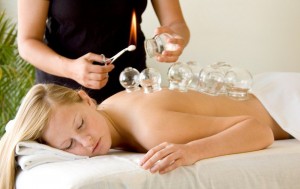
Cupping therapy is an alternative medicine technique that uses a local heating element on the skin using heated cups rather than the usual hot water that is commonly used. His practice usually takes place in Asia, but also in Latin America, Eastern Europe and the Middle East. Banking is described as quackery and is therefore still widely practiced by those who practice alternative medicines. However, it is now widely used in Western countries.
To understand how cans work, you first need to have an idea of what a heating element is. They are usually designed to heat a specific area, usually to a specific temperature, for a short period of time. The main heating element is a copper coil with an insulated coil at the top.
When you turn on the heating element, it heats the water inside the coil. The water in the coil is heated and then pushed out of the coil by an electric current. In the same way, you can apply current to the heating cup by simply touching it to your skin. This is a relatively safe process for most people.
During the cupping process, the top layer of the skin heats up so that it becomes very warm. The top layer is known as the fascia, which makes up the layers of skin on the skin. As the copper coil heats up the fascia, it causes it to expand, causing increased blood flow and circulation. Increased circulation and blood flow to this area causes the area to become congested.
One major benefit of cupping is the fact that it increases circulation and energy in the body. There is also some evidence that suggests that it improves mental health. However, there is a long history of criticism of the practice of cupping and one of the major criticisms comes from those who say that it is actually quackery and has no medicinal value. The truth is that there is a lot of merit in the criticisms.
For starters, there is some evidence that shows that cupping can work to reduce cellulite and relieve pain. Some studies have shown that the treatment can also reduce scarring and swelling. However, it is difficult to determine how well these results would stand up when taken over time.

For many people, the major criticism is that the heat produced is too much for their skin
Many claim that it feels uncomfortable and even painful, particularly for those that have sensitive skin.
This is actually one of the main criticisms of this form of heat therapy, which is why people have resorted to other methods, such as hot or steam treatments. Nevertheless, it is a popular form of alternative healing and has been a popular practice in different cultures around the world.
As with all other forms of healing, this form of therapy also has its own set of benefits and drawbacks. For example, some have claimed that the application of copper can cause some side effects, such as bruising, redness, inflammation, and even irritation. It is also possible for the treatment to be a bit pricey, depending on the amount of therapy that you need.
Hot cupping therapy is often done in areas of the body that may not be suitable for regular hot or cold treatments. This is one of the biggest downsides. Of course, you can still use traditional treatments to get relief from pain, but you have to go somewhere more comfortable.
There are also disadvantages to this form of therapy. For example, you may be more susceptible to infections and bacteria earwax accumulation if you spend too much time in hot or cold places.
You also need to make sure you are wearing the right clothing and accessories during this warm procedure. During therapy, you can wear loose clothing and do not allow metal objects to come into contact with warm parts of the body. Also, remember to wash your hair, face and hands afterwards, as some of the heat can penetrate the skin.